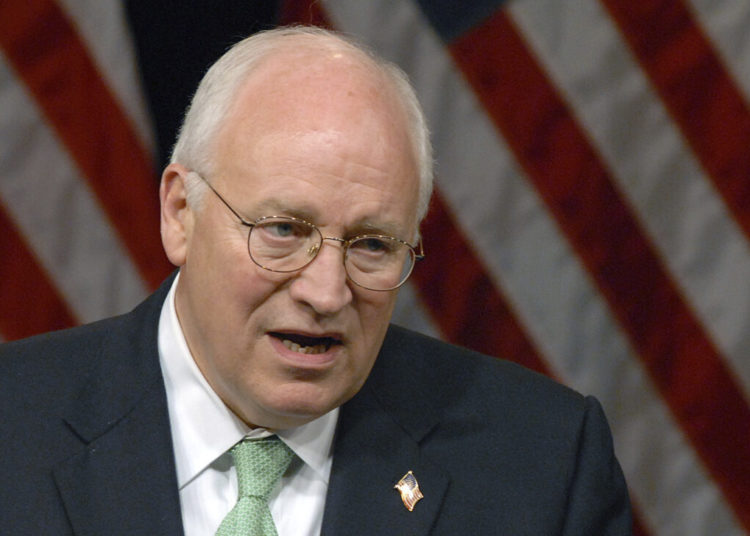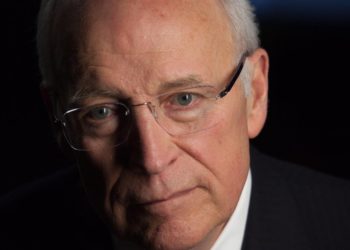The federal prosecutors pursuing a criminal case against James B. Comey, the former F.B.I. director, disclosed evidence on Monday, including private emails, showing that he used a confidant to provide information to reporters — even though it was difficult to tell how some of the evidence was relevant to the specific charges detailed in the case.
The evidence was included in a 48-page filing that appeared to be an effort to construct a narrative that Mr. Comey had leaked information to the news media without actually tying such assertions to the allegations made in the indictment brought against him.
The filing, in Federal District Court in Alexandria, Va., was styled as a rebuttal of Mr. Comey’s claims that the charges he is facing should be thrown out as an act of vindictive prosecution by the Trump administration. He is accused of lying to and obstructing Congress in testimony on the investigation into Russia and the 2016 Trump presidential campaign, during which he was asked whether he had authorized anyone at the F.B.I. “to be an anonymous source in news reports.”
Yet the prosecutors who wrote the filing spent as much time suggesting that Mr. Comey had used the confidant, Daniel C. Richman, a law professor at Columbia University, as a conduit to the news media as they did seeking to reject allegations that the indictment was vindictive. Mr. Richman had worked at the F.B.I. as a “special government employee,” leaving in early 2017.
Last month, lawyers for Mr. Comey accused President Trump of improperly ordering the Justice Department to prosecute him out of a deep personal animus reaching back to May 2017, when he was fired as F.B.I. director while overseeing the Trump-Russia investigation.
The lawyers pointed to the extraordinary origins of the case: a public message on social media in which Mr. Trump ordered his attorney general, Pam Bondi, to go after Mr. Comey, one of his most reviled adversaries. The demands came shortly after the president had ousted the U.S. attorney for the Eastern District of Virginia who had refused to indict Mr. Comey and replaced him with a neophyte prosecutor, Lindsey Halligan, who quickly filed charges in the first criminal case she had ever handled.
(Mr. Comey’s lawyers have also argued that the case Ms. Halligan filed should be dismissed because Mr. Trump improperly appointed her to her post as U.S. attorney. But in a separate motion on Monday, prosecutors rejected that claim.)
While Mr. Comey’s lawyers described Mr. Trump’s social media message as “smoking-gun evidence” of vindictiveness, the prosecutors argued it was “hardly evidence at all” and merely part of “a mix of news reports, social-media posts and speculation” used to accuse the president of bias.
The prosecutors also claimed that the indictment of Mr. Comey was not born out of animus but rather addressed “the societal interests” of bringing charges against “a former F.B.I. director who lied to Congress about his conduct while at the helm of the nation’s primary federal law-enforcement agency.”
The indictment accuses Mr. Comey of lying to and obstructing Congress during a hearing before the Senate Judiciary Committee on Sept. 30, 2020.
At that hearing, Senator Ted Cruz, Republican of Texas, asked Mr. Comey whether he had authorized someone at the F.B.I. “to be an anonymous source in news reports.” The indictment says Mr. Comey misled the committee by saying that he had not done so.
Mr. Comey’s lawyers have attacked the indictment — as well as Mr. Cruz’s question — as imprecise and confusing. Moreover, they have said that Mr. Comey’s answer was not a detailed, direct response to Mr. Cruz, but was instead a “literally true statement” in which he said he stood by previous testimony he had given three years earlier when he was asked similar questions in a different congressional hearing.
Even though they were supposed to be addressing the question of vindictiveness, the prosecutors filled the opening pages of their filing with quotations from personal emails and texts messages between Mr. Comey and Mr. Richman, as well those between Mr. Richman and reporters.
While those communications could ultimately help prosecutors prove that Mr. Comey used Mr. Richman to communicate to the news media, it remained unclear what bearing they had on the specific charges in the case: namely, whether Mr. Comey was lying when he denied authorizing an F.B.I. employee to anonymously share information for news reports.
Prosecutors have not made clear what new reports they were referring to or which reporters may have worked on them.
Indeed, the new court filing quoted communications between Mr. Comey and Mr. Richman concerning several articles in The New York Times. Two cited in the filing touched on Mr. Comey’s controversial handling of the conclusion — and brief reopening — of the investigation into Hillary Clinton’s use of a private email server close to the 2016 election in which she was the Democratic candidate.
The first article was a graphic The Times published on Nov. 2, 2016, outlining the pros and cons of the choices available to Mr. Comey in his handling of reopening the Clinton investigation. It did not contain any new information about the inquiry or cite Mr. Richman — or anyone else — as a source.
Still, the emails quoted in the filing suggest that Mr. Richman helped influence the abstract analysis presented in the article.
Before the graphic was published, Mr. Comey had complained about The Times’s coverage and said to Mr. Richman, “Perhaps you can make him smarter.” It is not clear whether that was a reference to the same reporter who was working on the graphic, but after it appeared, Mr. Comey wrote to Mr. Richman, “Well done my friend.”
The other article appeared to be an investigation published in April 2017 that scrutinized Mr. Comey’s handling of communications about the Clinton investigation. It featured on-the-record quotations from Mr. Richman. The indictment accused Mr. Comey of lying about authorizing an anonymous source to leak information to the news media.
The filing also discussed The Times’s publication, days after Mr. Trump fired Mr. Comey in May 2017, of information about Mr. Comey’s earlier conversations with the president. Mr. Comey later testified to Congress that he had directed Mr. Richman to share information about them, based on contemporaneous memos he had written.
The filing quoted a text Mr. Richman sent the author of those articles, Michael S. Schmidt, saying that he “just got go ahead” — a possible reference to Mr. Comey agreeing to let him serve as a source. Even if that were true, it could not be a basis for the criminal charge because the indictment accuses Mr. Comey of lying about using an F.B.I. employee to leak information and Mr. Richman was no longer working at the F.B.I. by then.
The new filing also disclosed an insinuating piece of evidence that did not appear to be related to either of the two charges detailed in the indictment. It instead appears related to a third charge that Ms. Halligan tried to bring against Mr. Comey, but that a grand jury rejected.
That involved a memo the C.I.A. sent to the F.B.I. on Sept. 7, 2016, containing intelligence about Russia’s interference in that year’s campaign. The F.B.I. had recently opened an investigation into Russian interference and the nature of the Kremlin’s ties to associates of the Trump campaign.
The memo itself broaches how Russian intelligence analysts had discussed purported emails saying that in late July 2016, Mrs. Clinton had supposedly approved a campaign plan centered on Mr. Trump and Russian hackers to distract from her own email scandal. Evidence gathered by a special counsel later showed that the purported emails were likely fabricated.
At the September 2020 hearing, a senator had asked Mr. Comey about the memo, but Mr. Comey said he had no memory of seeing it. The third charge Ms. Halligan tried to bring was over whether Mr. Comey lied in saying that.
The new filing said the F.B.I. had recently found handwritten notes from Mr. Comey, dated Sept. 26, 2016, that read: “HRC plan to tie Trump.”
Even though that appeared to refer to Mrs. Clinton, it is not clear why those notes would support the failed charge, since they do no mention the Sept. 7 memo at issue. It has long been public that Mr. Comey knew about the allegation itself because he was present for a briefing in August at which it was mentioned.
Alan Feuer covers extremism and political violence for The Times, focusing on the criminal cases involving the Jan. 6 attack on the Capitol and against former President Donald J. Trump.
Charlie Savage writes about national security and legal policy for The Times.
The post Prosecutors Urge Judge to Rebuff Comey’s Bid to Dismiss Case appeared first on New York Times.




